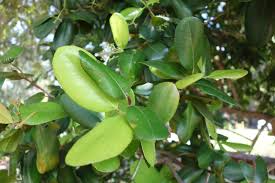










CARDAMON
Elettaria cardamomum
FAMILY: Zingiberaceae
SYNONYMS
Elettaria cardomomum var.cardomomum, cardamon,cardamomi,cardamum,mysore cardamom.
GENERAL DESCRIPTION
A perennial, reed-like herb up to 4 metres high, with long, silky blade-shaped leaves. Its long sheathing stems bear small yellowish flowers with purple tips, followed by oblong red-brown seeds.
DISTRIBUTION
Native to tropical Asia, especially southern India,; cultivated extensively in India, Sri Lanka, Laos, Gutemala and El Salvador. The oil is produced principally in INdia, Europe, Sri Lanka and Guatemala.
OTHER SPECIES
There a numerous related species found in the east, used as local spices and for medicinal purposes, such as round or Siam cardamon (Amomum cardamomum) found in India and China. An oil is also produced in India and China. An oil is also produced from wild cardamon (E.cardamomum var.major).
HERBAL/FOLK TRADITION
Used extensively asa domestic spice, especially in India, Europe, Latin America and Middle Eastern countries. It has been used in traditional Chinese medicine and Indian medicine for over 3000 years, especially for pulmonary disease, fever, digestive and urinary complaints. Hippocrates recommended it for sciatica, coughs, abdominal pains, spasms nervous disorders, retention of urine and also for bites of venomous creatures. Current in the British Herbal Pharmacopia as a specific for flatulent dyspepsia.
ACTIONS
Antiseptic, antispasmodic, aphrodisiac,carminative, cephalic,digestive, diuretic, sialogogue,stimulant, stomachic,tonic (nerve).
EXTRACTION
Essential oil by steam, distillation from the dried ripe fruit (seeds). An oleoresin is also produced in small quantities.
CHARACTERISTICS
A colourless to pale yellow liquid with a sweet-spicy, warming fragrance and a woody-balsamic undertone. It blends well with rose, olibanum, orange, bergamot, cinnamon, cloves, caraway, ylang ylang, labdanum, cedarwood, neroli and oriental bases in general.
PRINCIPAL CONSTITUENTS
Terpinyl acetate and cineol (each may be present at up to 50 per cent),limonene, sabinene,linalol, linalyl acetate,pinene, zingiberene, among others.
AROMATHERAPY/HOME USE
Digestive system: Anorexia, colic, cramp, dyspepsia, flatulence, griping pains, halitosis heartburn, indigestion, vomiting.
Nervous system: Mental fatigue, nervous strain.
OTHER USES
Employed in some carminative, stomachic and laxative preparations; also in the form of compound cardamon spirit to flavour pharmaceuticals. Extensively used as a fragrance component in soaps, cosmetics and perfumes, especially oriental types. Important flavour ingredient, particularly in curry and spice products.
Reference: The Encyclopedia of Essential oils: Julia Lawless
Articles Latest
- Chamomile Roman - Chamaemelum nobile
- Chamomile Maroc - Ormenis multicaulis
- Chamomile German - Matricaria recutica
- From Biology To Aromatherapy
- Plant Messengers
- Celery Seed-Apium graveolens
- Cedarwood Virginian - Juniperus virginiana
- Cedarwood, Texas- Juniperus ashei - Essential oils
- Cedarwood Atlas- Cedrus atlantica - Essential Oils
- Cassie - Acacia Farnesiana - sweet acacia
- Cassia - Cinnamomum Cassia
- Cascarilla Bark - Croton eluteria
- Carrot Seed- Dacus Carota
- CARDAMON
- CARAWAY
- CANANGA
- CAMPHOR
- CALAMUS
- Calamintha-Calamintha officinalis
- CAJEPUT- Melaleuca cajeputi
- Plant Expression
Articles-Most Read
- Home
- Balsam Canadian - Abies balsamea
- Balsam Peru
- Copaiba Essential Oil
- North America: Tea Tree and Monarda-3
- Basil French - Ocimum basilicum
- Basil Exotic
- North America: Tea Tree and Monarda-2
- Exploring Transcultural Constants
- Thyme Essential Oil
- Balsam Tolu
- Palma Rosa
- The Bioactivity of Essential Oils
- Bay - West Indian - Pimenta racemosa
- Benzoin - Styrax benzoin
- Why Pharmacology Cannot Demonstrate Essential Oil Efficacy
- Exploring Essential Oil Activity The Conventional Way
- Complex information From Plants
- Aromatherapy: An Answer
- Contacts
